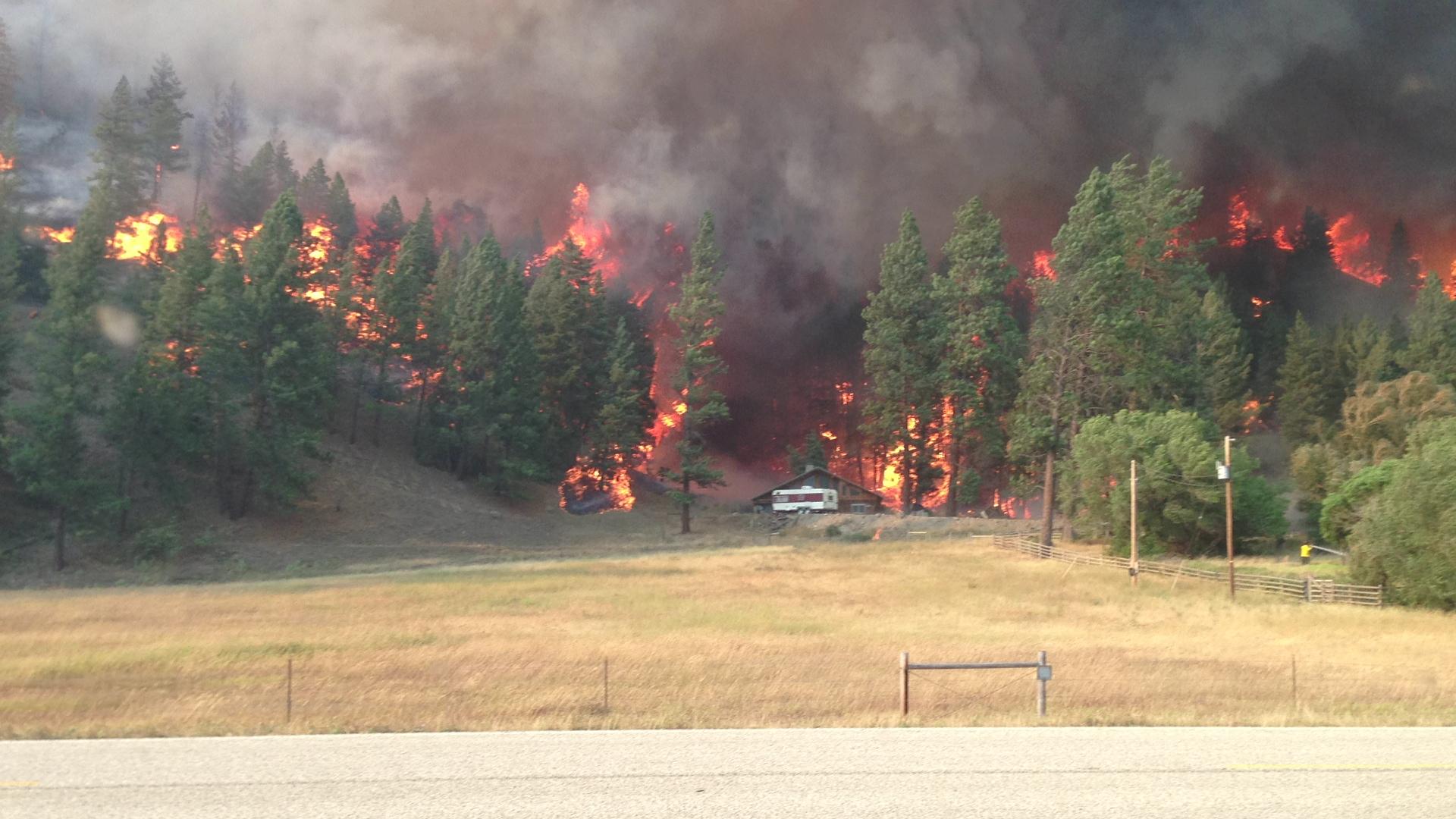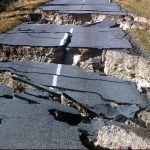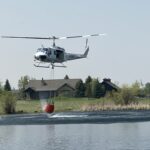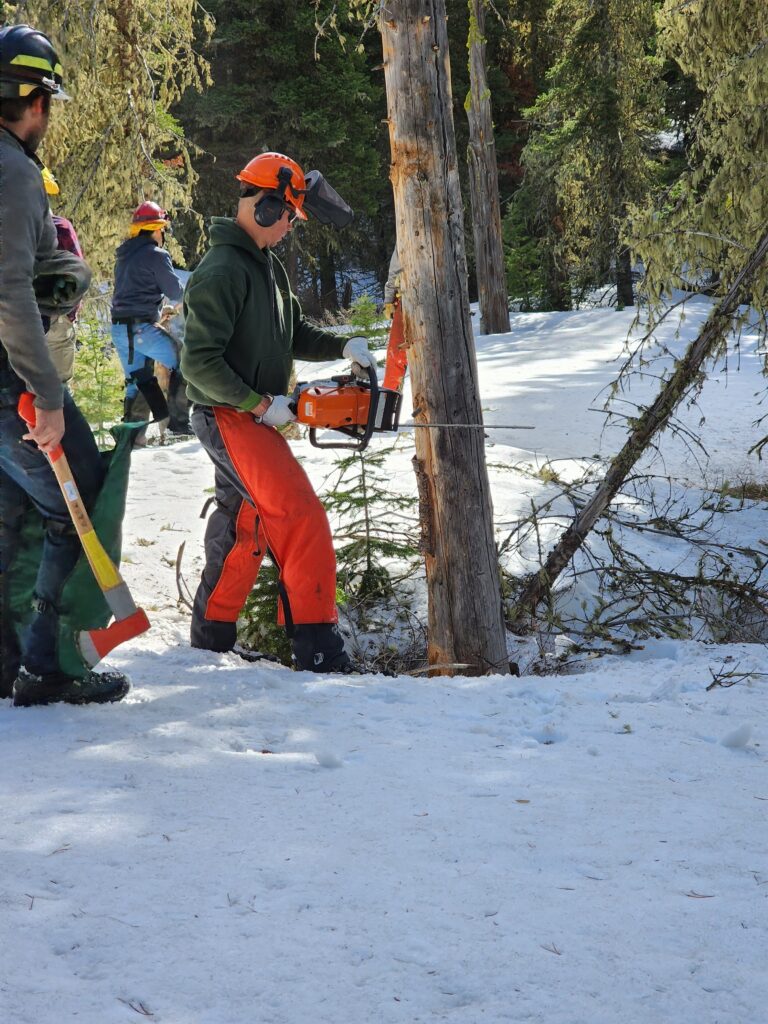
It’s been 10 years since the Derby Fire ran across much of Stillwater County, leaving more than 200,000 acres and 26 homes in ashes after 23 days of smoke and flames. The landscape has dramatically changed, but so has the mindset of government officials who create disaster plans, and rural homeowners who take a closer look at building sites and materials. Drought, steep and remote terrain, and strong winds are still factors to consider when it comes to anticipating the next big fire.
HISTORICAL FIRES
Large wildfires are to be expected on the Beartooth Ranger District, based on forest surveys and anecdotal evidence. In 1904, John Leiberg of the U.S. Geological Survey estimated that 70 percent of the Forest Reserve that now makes up the ranger district had burned in the previous 120 years. A forest study of the Benbow-Little Rocky area in 2014 reported evidence of a large fire that ran across the Beartooth Face in 1886. Pioneers from that time period recalled a fire that burned from the Boulder River drainage south of Big Timber to the Red Lodge area.
Forest Service fire records recorded 369 fires in the Beartooth Ranger District since 1970, of which 51 percent were human-caused and 49 percent were lightning-caused. Fire suppression efforts kept 85 percent of those fires under 10 acres. The rest grew large because of remoteness, steep terrain or dramatic weather events. The Storm Creek Fire burned 97,858 acres in 1988, and the Shepard Mountain Fire burned 14,890 acres and destroyed 32 structures in 1996.
SEVERE DROUGHT
Conditions in the Stillwater Valley were ripe for a large fire in 2006 – the Montana Department of Natural Resources and Conservation reported that 98 percent of Stillwater County was in at least moderate drought, and 60 percent was in severe drought.
By October 2006, after the Derby Fire finally ended, Columbus Fire Chief Rich Cowger explained at that time that moisture came to the Stillwater region early that year, spurring plant growth in the spring. That was followed by a very dry summer that turned the lush springtime vegetation into fire fuels, resulting in 80 wildland fires, he said. The region also experienced the hottest summer since the 1930s, with average temperatures of 74.5 degrees.
The lightning-caused Derby Fire covered only 10 acres when it was discovered on Aug. 22, 2006 in the Sugarloaf/Arch Rock/Hicks Mountain ridge area, about seven miles northwest of Nye in Sweet Grass County.
An initial attack was made by Forest Service and local government firefighters. Smokejumpers who arrived first had limited success because of heavy fuels, limited access in remote and rugged terrain, and weather conditions.
The next day, the fire grew to 300 acres and crossed into Stillwater County. On Aug. 24, roads were closed in the vicinity of the fire as it grew to 3,000 acres. One day later, 170 homes were put on alert and a Type 2 incident team was assigned, as the fire grew to 12,100 acres.
LIMITED RESOURCES
An early assessment by fire officials determined residences in the area were likely threatened, but additional firefighting resources were limited by high fire activity elsewhere, with 64 large fires underway across the U.S. and seven large fires within the Forest Service Region 1. Locally, many firefighting resources had been directed to the human-caused Emerald Hills Fire in Lockwood, on the outskirts of Billings.
By Aug. 28, bulldozers were digging fire lines and burnout operations were underway as the fire grew to 18,000 acres. Residents in harm’s way were given evacuation notices on Aug. 29, as the fire hovered around 18,500 acres and headed toward the Bridger Creek drainage in Sweet Grass County.
Four firefighters in Columbus Fire Department’s Engine 42 found themselves that day in dense smoke near the Cliff Swallow Fishing Access Site not far from Nye.
“All of a sudden it got real dark,” Bob Johnson later reported. “It was so smoky, you couldn’t see.”
Suddenly a ball of embers struck the truck, which left the road and rolled once down the embankment, ending right-side up in the Stillwater River. With minor injuries, the crew waved off help from a crew in an Absarokee Fire Department truck because of the dangerous fire conditions. An hour later, an Absarokee ambulance arrived and evacuated the four men.
By Aug. 29, more than 400 firefighters were assigned to the Derby Fire, and burnout operations were underway. At the time Type 2 Incident Commander Glen McNitt praised local teams for bulldozing fire lines on the southern flank closest to endangered homes. On the north flank, fire crews were working in “tremendously steep and rugged country,” McNitt said, adding that aerial resources would be needed to handle forecasted 30-40 mph winds.
BIG STORM
Strong winds expanded the fire overnight to 60,000 acres, as I-90 was closed from Columbus to Livingston and a Type 1 incident team was sent in. Firefighters on the fire’s swiftly moving north flank were pulled off for their own safety, with forecasts of a storm front moving in.
“We are seeing this year fire activity we’ve never seen before,” McNitt reported Aug. 30. “Drought, wind and higher than normal temperatures are making for unprecedented conditions.” The next day, 800 residents in Stillwater and Sweet Grass counties, including those in the Limestone and Meyers Creek areas, were evacuated as the fire quickly expanded to 100,000 acres. At an informational meeting in the Absarokee Elementary School gym that night, McNitt described the previous day’s conditions as “a perfect storm,” with winds reaching 40 mph. Stillwater County Disaster and Emergency Services Director Ken Mesch said the Derby Fire had moved eight miles in one day. Undersheriff Woody Claunch praised the evacuation efforts of the county’s Search and Rescue team. “I’ve been on duty 24/7 and I’m adjusting constantly,” Claunch said to an appreciative applause. “I’m running out of gas. So are my men. Please cooperate with them.”
FIRE WITNESSES
Stacy Schweigel was evacuating 14 horses, four dogs and nine cats from her home at the end of the pavement on Stillwater River Road when she saw the Derby Fire jump the Stillwater River. Former Stillwater County Commissioner Cliff Bare said he left before being told.
“The smoke was so thick, I couldn’t see 30 feet,” he said. “I figured it was time to get out.”
Dave Sample and Bryann Hill were putting out hot spots around the Midnight Canyon bridge over the Stillwater River when the fire suddenly approached. The two men went up and down the road using wet horse blankets to extinguish hot spots. Sample and Hill said they were able to save their homes at the end of Midnight Canyon Road with help of a nearby firefighter crew.
“They were volunteers and did a great job,” Sample said. “The fire captain told me I had just had my house saved by the mayor of Troy.” On Sept. 1, winds blew the fire north toward Grey Cliff and McLeod, and the fire expanded to 156,000 acres. The Stillwater Mining Co., however, was able to resume operations, and Stillwater residents were allowed to return to their homes the next day.
On Sept. 3, it was reported that 660 firefighters were holding a 120-mile long line around the 165,000-acre fire. The next day, the Derby Fire was reportedly 25 percent contained at 180,000 acres. Three hundred firefighters were mopping up hot spots in the Midnight Canyon and Nye areas the next day. The smoke and flames along I-90 didn’t stop an estimated 4,000 people from showing up at the 18th annual Sheep Drive event in Reed Point on Sept. 3, where $1,000 in donations were collected for the fire department.
THE END
The fire had burned about 223,570 acres, destroyed 26 homes and 20 outbuildings, and was reportedly 90 percent contained by Sept. 21. Forest Service officials said fire suppression efforts became more effective once the Derby Fire left the timber and moved to grasslands. Several days of rain and cold weather in early October put a definite end to the fire danger. On Oct. 9, six inches of snow lay on the ground in Absarokee, and a winter storm warning was issued on Oct. 11.
The Forest Service pegged the total firefighting cost for the Derby Fire at about $22.5 million. At one point, the Forest Service had six teams assigned to the fire – two Type 1, two Type 2 and two Type 3. According to the Montana Department of Revenue, 15 houses or cabins that burned in the Derby Fire have been rebuilt – many the very next year. Eleven owners chose not to rebuild, and three owners rebuilt burned outbuildings. One owner put in a doublewide, and another built a dry cabin instead of a house, the Revenue Department reported. Another owner put in a home where none had existed previously, and a party that bought a burned property has not rebuilt the burned house.

 Previous Post
Previous Post Next Post
Next Post


